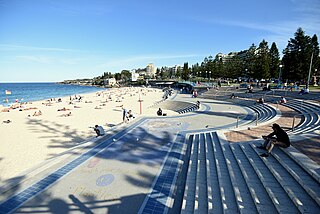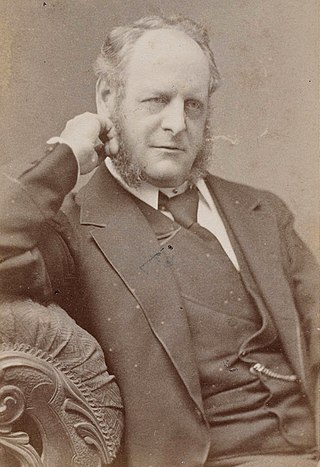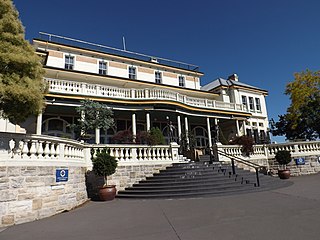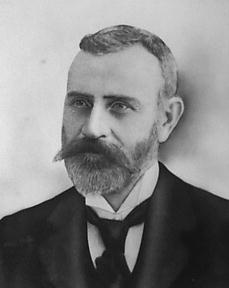
Coogee is a beachside suburb in the Eastern Suburbs of Sydney,in the City of Randwick. Coogee is located 8 kilometres south-east of the Sydney central business district,in the state of New South Wales,Australia.

Zetland is an inner southern suburb of Sydney,New South Wales,Australia 4 kilometres south of the Sydney central business district,in the local government area of the City of Sydney.

The City of Canterbury was a local government area in the south–west region of Sydney,New South Wales,Australia. The city was primarily residential and light industrial in character,and was home to over 130 nationalities. With a majority of its residents being born overseas,the council marketed itself as the "City of Cultural Diversity." First incorporated as the Municipality of Canterbury in 1879,the council became known as the City of Canterbury in 1993.
William Francis Sheahan also known as Bill Sheahan or Billy Sheahan,was an Australian politician,elected as a member of the New South Wales Legislative Assembly.

Thomas Rowe was a British-born architect,builder and goldminer who became one of Australia's leading architects of the Victorian era. He was also a politician,who was the first Mayor of Manly.
Moruya was an electoral district of the Legislative Assembly in the Australian state of New South Wales from 1894 to 1904,named after Moruya. It was created from parts of the districts of Eden and The Shoalhaven. Its only member was William Millard,who held it for the Free Trade Party until 1904 when it was replaced by The Clyde.

Sir Frederick Matthew Darley was the sixth Chief Justice of New South Wales,an eminent barrister,a member of the New South Wales Parliament,Lieutenant-Governor of New South Wales,and a member of the British Privy Council.
Victoria Park Racecourse was a racecourse in Zetland,an inner-city suburb,south of Sydney,New South Wales,Australia. It was bordered by O’Dea Avenue,South Dowling Street,Epsom Road and Joynton Avenue.
William McCulloch Gollan was an Australian politician and a member of the New South Wales Legislative Assembly from 1941 until 1962. He was a member of the Labor Party. He held numerous ministerial positions between 1953 and 1959.
The Agent-General for New South Wales is the representative of the State of New South Wales in the United Kingdom. The position is appointed by and the expenses and salaries paid by the state government to represent their commercial,legal,and diplomatic interests in Britain and to the British government and Whitehall.
Sir Archibald Howie was a Scottish-born Australian politician.
Theodore Charles Trautwein was an Australian hotelier,racehorse owner and member of the New South Wales Legislative Council.
Thomas Douglas Percy Holden was an Australian politician who served as a Member of the New South Wales Legislative Council from 1912 to 1934 and also as an Alderman and Mayor of the Municipality of Redfern. The owner of a tobacconist and barber shop in Redfern,Holden spent most of his career associated with the Australian Labor Party.
The Arcadia Hotel was a 150-room hotel in Sydney,Australia,developed by James Joynton Smith,on the site occupied today by Westfield Sydney.

The Municipality of Waterloo was a local government area of Sydney,New South Wales,Australia. The municipality was proclaimed on 16 May 1860 and,with an area of 3.4 square kilometres,included the modern suburbs of Waterloo,Zetland and Rosebery. The suburb of Alexandria was originally included as the Western Ward of the council but seceded as a separate municipality in 1868. After several attempts to amalgamate with various neighbours in the mid-1920s,the council was amalgamated with the City of Sydney,along with most of its neighbours,with the passing of the Local Government (Areas) Act 1948,although parts of the former council area were transferred in 1967 to the City of South Sydney.
The Imperial Arcade was a commercial building in Sydney,Australia,designed by prominent Sydney architect Thomas Rowe opened in 1891 on the site now occupied by Westfield Sydney.

The Carrington Hotel is a heritage-listed former spa,hotel and power station and now hotel and public bar located at Katoomba Street,Katoomba in the City of Blue Mountains local government area of New South Wales,Australia. It was designed by John Kirkpatrick and Bosser in 1882;and by Edward Hewlett Hogben with Goyder Brothers in 1911-13;and built from 1882 to 1913 by F. Drewett in 1882;and by Howie,Brown and Moffit in 1912-13. It is also known as Great Western Hotel. The property is privately owned. It was added to the New South Wales State Heritage Register on 2 April 1999.

Edward Hewlett Hogben was an Australian architect who had a prominent role in modernising the Carrington Hotel,Katoomba in 1911 when he designed the new facade for Sir James Joynton Smith. In partnership with the estate agent Alfred Craig,and then with the Goyder brothers,he played an influential role in the architectural development of both Katoomba and Leura between the wars. An early commission in 1905 was the design of the Kanowna guesthouses for John Connely in Wascoe Street,Leura. His most distinguished private home was the second Leuralla,built for Harry Andreas.

Francis Michael Punch JP was an Australian engineer,rower,hotel proprietor and local government politician who served as the first Mayor of the Borough of North Sydney and the final Mayor of the Borough of St Leonards.










